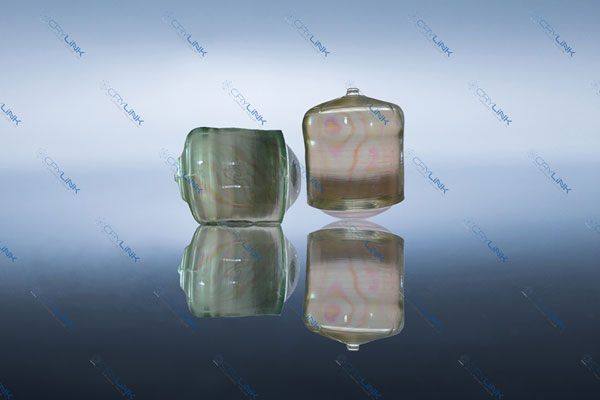1. Applications of BBO Crystal Frequency Doubling Quality
BBO crystals are widely used in optoelectronic devices that use frequency doubling due to their exceptional nonlinear optical behavior. BBO crystals have revolutionized the field of nonlinear optics and opened up new possibilities for a wide range of applications. In this chapter, we will discuss some of the key applications of BBO crystal frequency doubling quality.
1.1 Spectroscopy
BBO crystals are widely used in spectroscopy applications due to their ability to generate laser light at new frequencies. Spectroscopy is the study of the interaction between light and matter, and it plays a crucial role in a wide range of scientific and industrial applications. BBO crystals can be used for a wide range of spectroscopy applications, including Raman spectroscopy, fluorescence spectroscopy, and nonlinear optical spectroscopy.

1.2 Microscopy
BBO crystals are also used in microscopy applications for imaging biological tissues and structures. Nonlinear optical microscopy techniques, such as two-photon microscopy and harmonic generation microscopy, can provide high-resolution imaging of biological tissues with low phototoxicity and photobleaching. BBO crystals are used for frequency doubling in these microscopy techniques to generate the necessary laser light.
1.3 Quantum Information Processing
BBO crystals are essential for quantum information processing and quantum communication applications. BBO crystals can be used to generate entangled photon pairs through a process called spontaneous parametric down-conversion (SPDC). Entangled photon pairs are a key resource in quantum information processing and can be used for applications such as quantum teleportation, quantum cryptography, and quantum computing.

1.4 Optical Computing
BBO crystals can also be used for nonlinear optical signal processing in optical computing applications. Optical computing is a new field that aims to use light to perform computations. Nonlinear optical signal processing can provide high-speed and low-power signal processing for optical computing. BBO crystals can be used for frequency doubling and other nonlinear optical processes in optical computing.
1.5 Terahertz Radiation
BBO crystals are also used for the generation of terahertz radiation. Terahertz radiation is electromagnetic radiation with frequencies between the microwave and infrared ranges. Terahertz radiation has a wide range of applications, including imaging, sensing, and spectroscopy. BBO crystals can be used for frequency doubling to generate terahertz radiation from laser light sources.

2. Comparison of BBO Crystal with Other Nonlinear Crystals
BBO crystals are widely used in frequency doubling applications due to their exceptional nonlinear optical behavior. However, there are other nonlinear optical materials that are also used for frequency doubling, including lithium niobate (LiNbO3) and potassium titanyl phosphate (KTP). In this chapter, we will compare the frequency doubling quality of BBO crystals with other nonlinear optical materials.
2.1 Lithium Niobate (LiNbO3)
LiNbO3 is a widely used nonlinear optical material due to its high second-order nonlinear susceptibility and wide transparency range. LiNbO3 is particularly suited for frequency doubling applications in the visible and near-infrared ranges. However, LiNbO3 has a relatively low damage threshold and can suffer from photorefractive damage under high-power laser irradiation. Additionally, LiNbO3 crystals can be difficult to fabricate and phase match.

2.2 Potassium Titanyl Phosphate (KTP)
KTP is another widely used nonlinear optical material due to its high second-order nonlinear susceptibility and broad transparency range. KTP is particularly suited for frequency doubling applications in the near-infrared and mid-infrared ranges. KTP has a higher damage threshold than LiNbO3 and can be easily fabricated and phase matched. However, KTP crystals can suffer from thermal damage under high-power laser irradiation, and their conversion efficiency can be affected by crystal defects.

2.3 Comparison of BBO Crystal Frequency Doubling Quality with Other Materials
BBO crystals are widely used in frequency doubling applications due to their exceptional nonlinear optical behavior and several advantages, including high conversion efficiency, low loss, and narrow spectral bandwidth. BBO crystals have a higher damage threshold than LiNbO3 and KTP crystals and can be easily fabricated and phase matched.
However, BBO crystals can suffer from laser-induced damage under high-power laser irradiation, and their conversion efficiency can be affected by crystal defects. Additionally, BBO crystals are relatively expensive compared to LiNbO3 and KTP crystals and have a narrower transparency range than KTP crystals.
Generally speaking, BBO crystals are widely used in frequency doubling applications due to their exceptional nonlinear optical behavior and several advantages. While there are other nonlinear optical materials that are also used for frequency doubling, including LiNbO3 and KTP, BBO crystals offer several unique advantages that make them particularly suited for a wide range of applications. By understanding the properties and characteristics of different nonlinear optical materials, researchers can choose the most suitable material for their specific application.
3. Challenges and Future Directions of BBO Crystal Frequency Doubling Quality
BBO crystals have revolutionized the field of optoelectronic devices that use frequency doubling due to their exceptional nonlinear optical behavior. However, there are still several challenges that need to be addressed to further improve the quality and performance of BBO crystals. In this chapter, we will discuss the challenges and future directions of BBO crystal frequency doubling quality.

3.1 Challenges in BBO Crystal Frequency Doubling
One of the main challenges in BBO crystal frequency doubling is achieving phase matching over a wide range of wavelengths. Phase matching is crucial for achieving high conversion efficiency and low loss, but it can be challenging to achieve over a broad wavelength range due to the dispersion properties of BBO crystals. One solution to this challenge is quasi-phase matching, which involves periodically reversing the sign of the nonlinear coefficient to achieve phase matching over a broad wavelength range.
Another challenge in BBO crystal frequency doubling is the stability of the crystal under high-power laser irradiation. BBO crystals can suffer from laser-induced damage, which can reduce the conversion efficiency and limit the maximum output power. The stability of the crystal can be improved by optimizing the crystal growth and polishing techniques and by applying anti-reflection and high-reflection coatings.
3.2 Future Directions of BBO Crystal Frequency Doubling
One of the future directions of BBO crystal frequency doubling is to further improve the conversion efficiency and spectral purity of the crystals. This can be achieved by developing new crystal growth techniques and improving the polishing and coating techniques. One promising technique for improving the conversion efficiency is the use of nanoscale engineering to modify the crystal structure and enhance the nonlinear optical behavior.
Another future direction of BBO crystal frequency doubling is to develop new applications in areas such as quantum information processing, optical computing, and sensing. BBO crystals can be used for generating entangled photon pairs for quantum communication and for nonlinear optical signal processing in optical computing. BBO crystals can also be used for sensing applications, such as environmental monitoring and medical diagnostics.
Finally, there is also a need for further research on the fundamental physics of nonlinear optical processes in BBO crystals. This includes studying the influence of crystal defects and impurities on the nonlinear optical behavior of BBO crystals and developing new theories and models for predicting and understanding the properties of BBO crystals. In conclusion, BBO crystals have revolutionized the field of optoelectronic devices that use frequency doubling due to their exceptional nonlinear optical behavior. However, there are still several challenges that need to be addressed to further improve the quality and performance of BBO crystals.

Future directions include improving the crystal quality and developing new applications in areas such as quantum information processing, optical computing, and sensing. By addressing these challenges and exploring new directions, BBO crystal frequency doubling quality will continue to advance and open up new possibilities for optoelectronic devices.
Conclusions
We discuss some key applications of the frequency-doubling quality of BBO crystals. We compare the frequency-doubling mass of BBO crystals with other nonlinear optical materials and discuss the challenges and future directions of the frequency-doubling mass of BBO crystals.
BBO crystals have revolutionized the field of optoelectronic devices that use frequency doubling due to their exceptional nonlinear optical behavior. BBO crystals have several advantages that make them highly suited for a wide range of applications, including high conversion efficiency, low loss, and narrow spectral bandwidth. BBO crystals are widely used in spectroscopy, microscopy, quantum information processing, optical computing, and terahertz radiation applications. By understanding the properties and characteristics of BBO crystals, researchers can continue to develop new applications and technologies that utilize the exceptional properties of BBO crystals.
In conclusion, BBO crystal frequency doubling quality is a fascinating and important topic that has opened up new possibilities for a wide range of applications. By continuing to explore the properties and characteristics of BBO crystals and developing new technologies and applications, researchers can continue to push the boundaries of optoelectronic devices and revolutionize the field of nonlinear optics.

Frank
Frank graduated from the University of Shanghai for Science and Technology, majoring in optics. As a technical engineer at Crylink Company, he deeply understands crystal materials and laser components.
Related Video(s) with this Article
Related Product(s) with this Article
Related Application(s) with this Article



